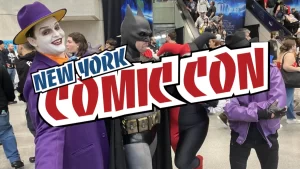When the Dead Can’t Stop Walking
A Video Game Review of The Walking Dead [Episode 1 “A New Day”]
By: Lawrence Napoli
I am drawn to anything that involves zombies. Zombie stories entice such an adrenaline rush because of the intense amount of thought it provokes within me considering that such a fantastic scenario is merely one fictional circumstance away from becoming reality. How would I respond? How would I cope? How would the rest of the world? How would you? When the world literally goes to hell most people probably wouldn’t don some makeshift superhero costume and become impromptu vigilantes to wipe out the zombie threat from the streets. Most people would track down as much family as possible, find the safest place available to hunker down in and wait it out, until waiting just wasn’t safe anymore. The realism, drama and raw emotion that is extracted from plain people surviving the end of the world has a universal appeal to humanity because (to a much lesser, dramatic and danger-filled extent) we are all surviving the challenge of life every day when we wake up. This explains why Robert Kirkman and The Walking Dead franchise continues to reach new outlets for its brand and finding plenty of success (and dollar bills) in every iteration. I won’t extrapolate on the intrigue of the comic book or the intensity of the TV series, but suffice it to say, the video game world of The Walking Dead carries over everything that makes it work from its previous manifestations while keeping the experience fresh even for the most dedicated veterans of the franchise.
Gameplay
The Walking Dead videogame is an interactive drama that was developed and published by Telltale Games. This is the company that was also responsible for creating Back to the Future: The Game, Jurassic Park: The Game and Sam & Max: The Devil’s Playhouse (the game). All of these games are presented in episodic fashion and employ a very similar visual interface in addition to game play mechanics. This is exactly the type of game that anyone can pick up and play because it doesn’t require pinpoint reflexes nor does it demand rigorous repetition to master. If you can navigate an analog stick, you too can complete this game with relative ease (as is reflected in its trophy/achievement list – all of which are accomplished by completing each chapter). The interface involves a third person, cel-shaded, fixed camera that harkens back to Resident Evils 1, 2 and 3. The challenge to progressing in the story is investigating each scene for objects you can interact with in the environment or by speaking to other characters to reveal that vital piece of information that unlocks options for surviving the zombie apocalypse. Anyone who is a veteran of Myst and is a fan of Mass Effect 2’s (not 3’s) dialogue system will find The Walking Dead very comfortable.
If poking around static environments and flirting with digital people is not what you consider to be “entertaining” in a game, then rest assured, there is a significant element of combat in the game because zombies just aren’t going to let you walk away from them. The first episode of The Walking Dead requires the player’s avatar to dispatch several zombies in quite brutal fashion at point blank range, and doing so requires a very easy to maneuver targeting reticule combined with quick-time button mashing challenges to fend off the various undead opposition. The gameplay is not nearly as challenging as Heavy Rain, but it is still active enough to not bore the player.
This game’s main source of fun is generated from simply participating in this expanded fiction set within the world of The Walking Dead. As such, talking is a large part of progressing in the story. The dialogue sequences blend seamlessly with the cut and action scenes which does much to aid in the suspension of disbelief. Choosing a speaking option, however, is not always as easy as leisurely pressing a button. Some contextual conversations have very brief windows for the player to make a decision before the option to respond in any way passes all together. Likewise, there will be similar decisions the player must make in emergency situations that can determine life and death for you or any other survivors you pick up along your journey. If the player is actively engaged in the story, making the decisions you really want with little to no time is a breeze. Also, the relationships you build with certain characters are not without consequence as key characters will remember how the player handled previous confrontations or details mentioned in prior conversations that may help or harm the player at a later point in the story.
Story
The story of The Walking Dead videogame is set the day of the zombie outbreak in the state of Georgia. The player assumes the role of Lee Everett, a black man in his 30s-40s that begins his zombie survival journey under less than optimum circumstances. What’s interesting to note in this “Choose your own adventure” style of video game story is that the player doesn’t know any back story about Lee until conversation windows later on during the game present these options for the kind of information Lee is willing to divulge. Some players may be put off by this because they won’t know “the right response to give,” but that’s exactly the point. Not knowing the details beforehand requires the player to mold the type of Lee, he or she wants him to be so if you want him to be a Rick-style knight in shining armor or a Shane-style psycho, the options are in your dialogue choices. Heck, there’s even a neutral option to give no response in just about every scenario. Overall, the story begins as very prototypical in presenting desperate people attempting to survive dire circumstances, but what has set The Walking Dead apart from other zombie franchises is its focus on character and relationships and that theme clearly carries over to the video game as Lee is not only the type of character I want to see survive and flourish, I believe he is a character that could easily matriculate over to the comic books or even AMC’s TV series. One of the best parts of the story is the “ending” the player gets to see at the end of each episode which teases the player as to the scenarios that await him or her in the next episode. Having played Lee in three distinct ways, I have found various different reveals at the end of episode 1 in terms of different sources of conflict, enemies within the group and who my most loyal friends may turn out to be. The story looks to play out in several different ways, all of which are very compelling, and I’ve only completed 1/5 of the game.
Presentation
I know a lot of people who are instantly turned off by cel-shaded graphics in video games. I will never claim to be the biggest fan of it either; however, I will note that this rather cartoonish style doesn’t take any of the gravity away from The Walking Dead game. As a less demanding graphical style, cel-shading allows for more programming power to be put into proficient gameplay, dialogue options and environment interactions. Besides, who’s really interested in sitting through hours of load screens?
The game asks the player in the beginning whether he or she wishes to play with or without hints which basically highlights items in the environment that can be interacted with as well as suggesting whom to speak to and where to go next. Turning the help option off does present a greater challenge, but it may involve too much time investigating each and every scene for the player to acquire that which is necessary to progress.
The voice over acting is superb. Distinct sounds tied with naturally written conversation plays very well in establishing a serious and dramatic tone to this game. Cel-shaded graphics don’t allow for the most revealing facial expressions, but combined with this VO talent, every character that the player is introduced to becomes one that he or she genuinely cares about.
Conclusion
The Walking Dead fans have no excuse for not already owning this game for the PC or PS3. It is not available for Xbox 360 yet (there’s a first) probably because Telltale is still working on a conversion code to allow the game to use Kinect control. The story is great because I get to play a role in building a significant survivor in this zombie apocalypse. The only bad part about this game is that I have to wait an additional month for the next part of the game to be playable and by the end of episode 1, believe me; you too will be demanding an expedient continuation. Non-fans of the franchise or zombie stories in general may not find too much fun here because it doesn’t present enough generalized video-gaming enjoyment to be worthwhile otherwise. Despite its cel-shaded look, this is not a game for kids as the gore factor is high, adult situations are plenty and characters can’t seem to hold back from dropping F-bombs left and right. At $19.99 for the entire 5 episode package on the PSN network, I cannot recommend a better bang for your video gaming buck than The Walking Dead.







